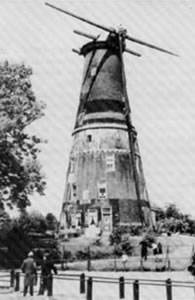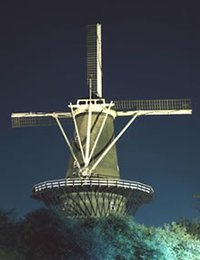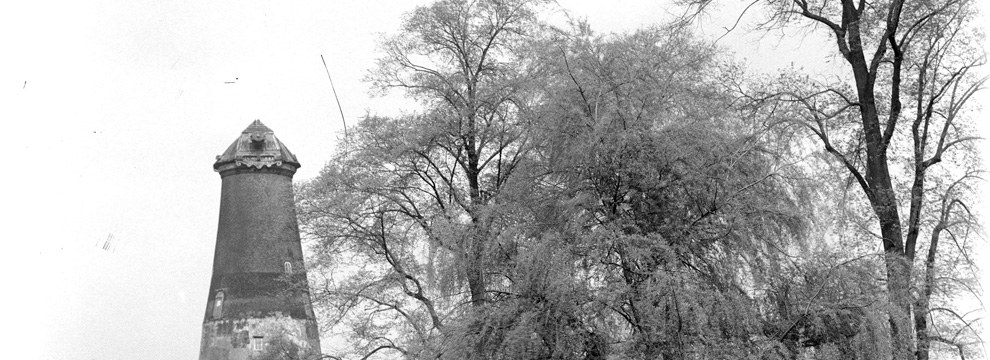-
Observation post
On 12 May 1940, the De Valk mill was established as an observation post by the Dutch military but the capitulation followed only two days later. The mill was fired upon from the air during the preceding wartime hostilities, leaving bullet holes in the cap and in the walls.

-
The war years
Following the capitulation, the mill once again had to grind grain for the locals as well as for the occupying forces and strict controls were carried out. Wheatmeal was soon only available by ration and after 1943 it became so scarce that rye and wheat had to be mixed together.
During the so-called hunger winter of 1944-1945, many people had their own limited supply of (illegal) grain ground, something which the Germans turned a blind eye to. This was not powered by wind incidentally but by electrically driven millstones.
They also ground illegally for the resistance and any seized provisions were concealed in the mill. During this period, in which fuel was also scarce, almost all of the wooden parts (the tail-pole, props, gallery, etc.) were dismantled and used to fire the stoves -

After the war
The mill was in a deplorable state after the war but the local council fortunately recognised its cultural historical importance and funded a thorough restoration in 1947. With the exception of Willem van Rhijn and both of his sisters, all the people that had taken residence in the mill over the years were eventually forced to leave due to the risk of fire.



